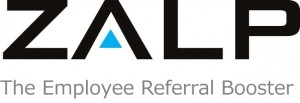10 Employee Referral Best Practices

You are missing out on a big opportunity if you are not using employee referrals to drive your recruitment needs. It is definitely not a mere coincidence that a majority of the organizations that feature in Forbes List of Best Places to Work in are organizations with very strong referral culture which they have assiduously built over the years. Organizations like Accenture, for instance, actively use employee referrals to close more than 50% of their hiring needs which helps them keep recruiting costs down, hire superior talent and enhance overall organizational productivity. But not all organizations have managed to achieve an equal measure of success with their referral programs. This is because they have not managed to learn from the best practices employed by others in the industry to make their referrals programs more effective and aligned to employee and organizational expectations.
We have put together 10 employee referral best practices taken from organizations with highly successful referral programs to help you kickstartan effective employee referral program in your organization.
• The best employee referral programs are those that have built an objective or a purpose for launching the program that goes beyond mere financial rewards. Articulating a solid mission for the referral program like help a friend get the job he is looking for or help prepare the organization to move to the next level of growth or even you choose the people you want to work with give the referral program a definite sense of direction and purpose and is likely to draw more active participants.
• Timely and effective communication is one of the keystones for success of an employee referral program. Ensure to respond to employee referrals within a definitive timeframe and ensure that the communication covers specific details of what the employee wants to know.
• Give preferential treatment to referral candidates over other candidates in the interview process. This means that candidature for referrals are processed faster with earlier interview dates and faster closure.
• Not all job openings need to go through the referral process. The referral program will work much more efficiently if employees are allowed to focus on limited number of positions at any specific period of time. It is better to leverage employee referrals for high impact jobs or for skills that are hard to find otherwise in the market.
• Financial rewards are required but are not by themselves sufficient to keep employees motivated and engaged with the referral program. It is equally important to recognize a good referral and appreciate the employee for the same. Best practice would be to recognize and reward all good and relevant referrals, irrespective of the final outcome since they have done their part in the referral process.
• Integrating social media with the referral program is a no brainer these days. With the potential to reach hundreds of people within seconds, employee’s sharing jobs with their connections on social media can help draw more talented candidates within one hour what you would normally need one month to get.
• Employee referral is not simply a means of filling up an open position. It is about getting the right person to perform the right role. This is where distinguishing between good and bad referrer becomes important. To ensure that your referral program is successful, you need to encourage the good referrers to refer more while simultaneously discouraging the bad referrers from continuing to refer bad quality candidates.
• Open up your referral program beyond only employees to include vendors, clients and even past employees to give the organization as wide a pool of candidates to choose from as possible.
• Track and analyze referral data to understand what parts of the referral program are performing well and which areas need to be improved. A referral program that does not seek to keep improving is going to become irrelevant pretty fast.
• Lastly, any initiative needs a little bit of push to draw attention to it. Marketing the referral program is important to ensure that employees remain aware of the program and are continuously reminded about participating in it.
All of these best practices are borne out of experiences of organizations at various stages of the referral programs and to that extent are tried and tested recipes for success. Your referral program is likely to perform a whole lot better if some or all of these best practices are included.
ZALP is the No.1 Employee Referral Tool used by leading organizations to increase their employee referral hires. Visit zalp.com to know more or drop a mail to info@zalp.com
